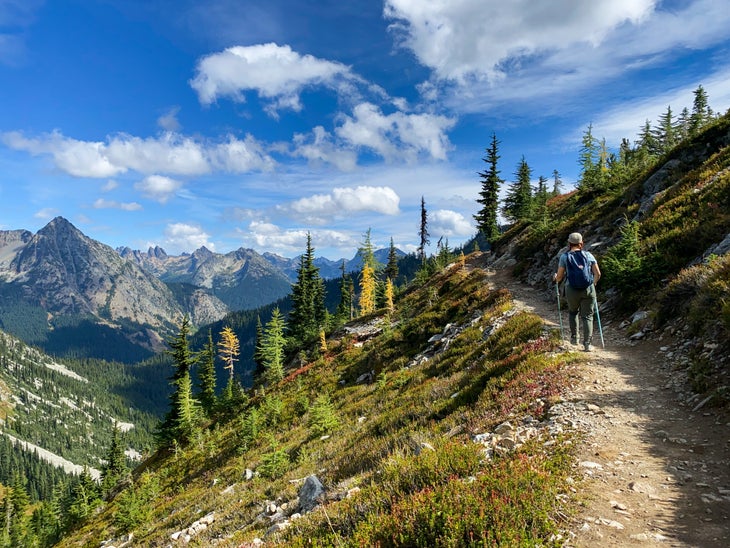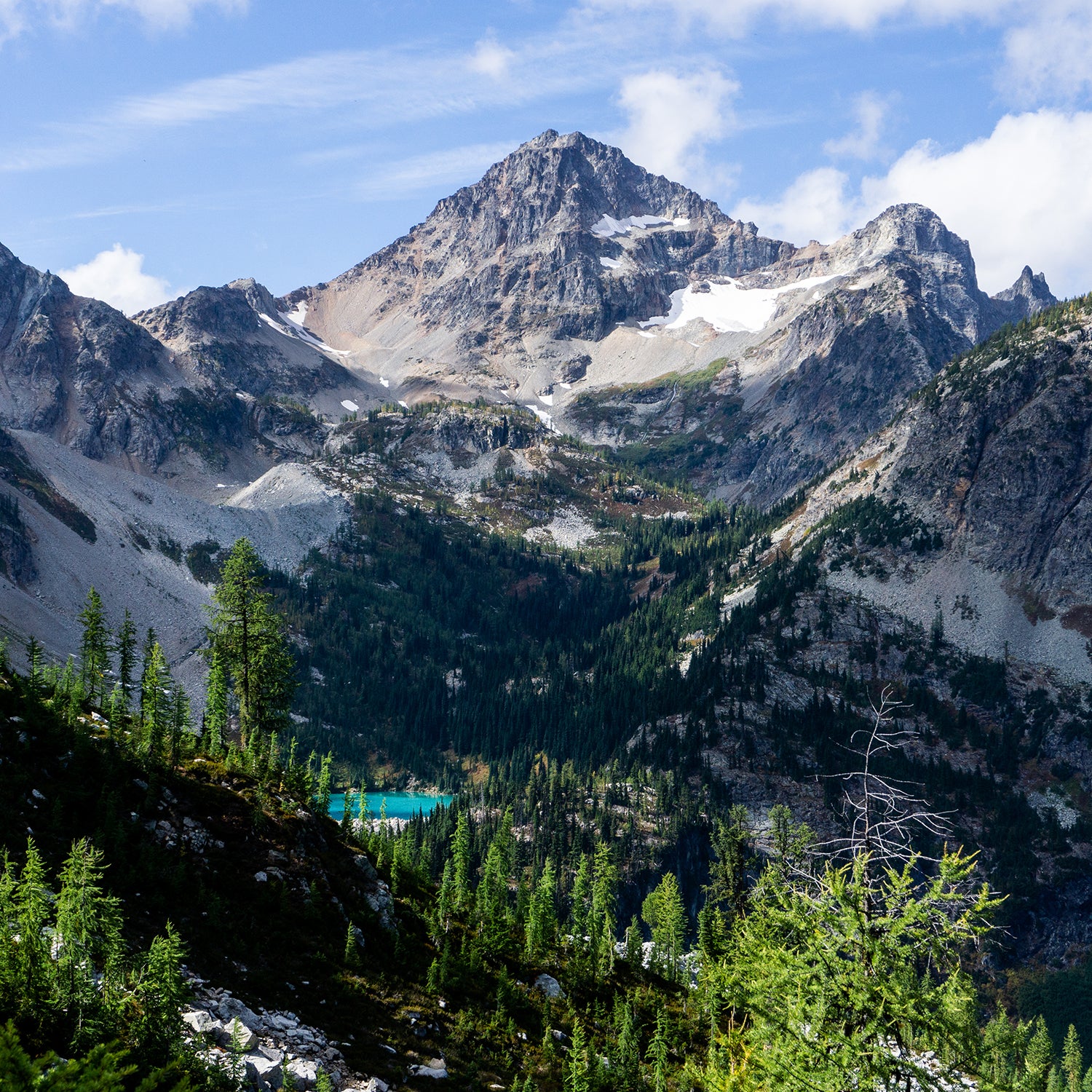63 Parks Traveler started with a simple goal: to visit every U.S. national park. Avid backpacker and public-lands nerd saved up, built out a tiny van to travel and live in, and hit the road, practicing COVID-19 best safety protocols along the way. The parks as we know them are rapidly changing, and she wanted to see them before it’s too late. North Cascades is her 43rd park visit.
The air hung thick like dirty pudding and stank of burnt rubber as I made my way out of the roadside pullout I was camped in. It seemed the apocalyptic wildfire smoke I had been hearing about for weeks had finally caught up to me, and it was not pretty. The West Coast was experiencing an unprecedented fire season, one that had already scorched millions of acres and killed dozens of people. It was barely mid-September. The year? 2020.
I couldn’t hike like that. The air quality was well into the hazardous zone, and simply standing outside felt like sucking down a dingy pack of cigarettes. The sky itself, the one thing we can count on to nourish us—toxic. I was devastated. I rolled my van into a Motel 6 near Tacoma, checked into a basic room, jumped into the shower, and promptly began sobbing. Global warming felt deeply personal now, a kick to the gut that threatened to take away the things I love most in this world.
I hunkered down for three long days, watching the smoke-drenched sun glow an opaque, tanning-bed orange. Reluctantly, I realized I needed to explore the park, smoke or not, so I crawled back into the van and drove north.
North Cascades, in northern Washington, is largely designated as a wilderness park, expressly set aside to remain untrammeled by man, but there is one road, North Cascades Scenic Highway, that cuts through the center of it, bisecting the north and south units. Smoke be damned, I wanted to swan dive straight into the heart of the area and see what conditions were like.
My journey started at Gorge Dam, faintly visible in the morning veil of white smoke. Next, I cruised over to Diablo Lake in the eerie gray light to take in what was supposed to be one of the most famous views in the Cascades—a shimmering turquoise lagoon perfectly framing Davis Peak. Only, the peak was nowhere to be found. I was adrift in a sea of white ash and muck that filled the air, gazing down at fuzzy little islets. My heart sank. There was no choice but to return to the motel in hopes of better weather tomorrow.
Sometimes, all it takes is a simple turn of events to make it feel like Mother Nature is working her magic in your favor. I woke the next morning and saw an actual sunbeam gleaming brightly onto the wooden banister outside my window. The weather gods had answered my prayers.��

Ready for an epic hike, I set off towards the eastern edge of the park, winding through old growth conifers and parking my van at the Rainy Pass Trailhead. The plan was to hike the 7.2-mile Heather-Maple Pass Loop, and the clean mountain air couldn’t have been more perfect. I started up a series of shaded switchbacks, detouring to lovely Lake Ann, throwing a quiet party in her brilliant autumn color shift.
From then on, it was straight up to the pass, switchback after breathless switchback, each turn somehow yielding more spectacular views than the last. I gazed out over a land ripe with craggy summits, occasional pops of fall color heightening the spectacle to near-utopian. The sun was warm, the maples had just turned crimson, and, far off, I could make out the high, glaciated peaks of the North Cascade Range, glittering like silent deities.
I didn’t want to leave. I wanted to wrap myself inside that moment forever until modern life melted away. I sat at the top of the ridgeline for a long while, remembering the smoke, the often tenuous nature of our joy on this planet, and why it is so critical that we fight for the things we care about, like clean air and feral landscapes.
After four days in a world without sun, this literal breath of fresh air was precisely the thing I needed. A gentle reminder that, yes, light will return, even after the darkest days.
62 Parks Traveler North Cascades Info
Size: 684,303 acres
Location: Northern Washington
Created in: 1968 (national park)
Best For: Backpacking, hiking, mountaineering, star gazing, fishing, car camping
When to Go: Summer (49 to 77 degrees) and fall (36 to 70 degrees) offer perfect backpacking/hiking weather, and summer months have the least precipitation. Winter (31 to 45 degrees) and Spring (34 to 65 degrees) often see much of the park buried in snow, and Highway 20 is generally closed mid-November to April.
Where to Stay:, located right on the shore of stunning Diablo Lake has a boat launch, flush toilets, a small beach, and wooded campsites with some privacy. There’s also easy access to several phenomenal hiking trails, right from camp.
Mini ���ϳԹ���: Hike the 7.2-mile. If you’ve only got one day in the North Cascades, this is the hike to do. Trek to Lake Ann, catch a glimpse of the high glaciated peaks, and traverse a narrow ridgeline surrounded by mountains as far as the eye can see.
Mega ���ϳԹ���: Go backpacking. Though the wildfire smoke ruined my plans for an overnight trek, the North Cascades are best explored overnight. A popular option is hiking up Cascade Pass, then checking out Black Warrior Mine and the.


